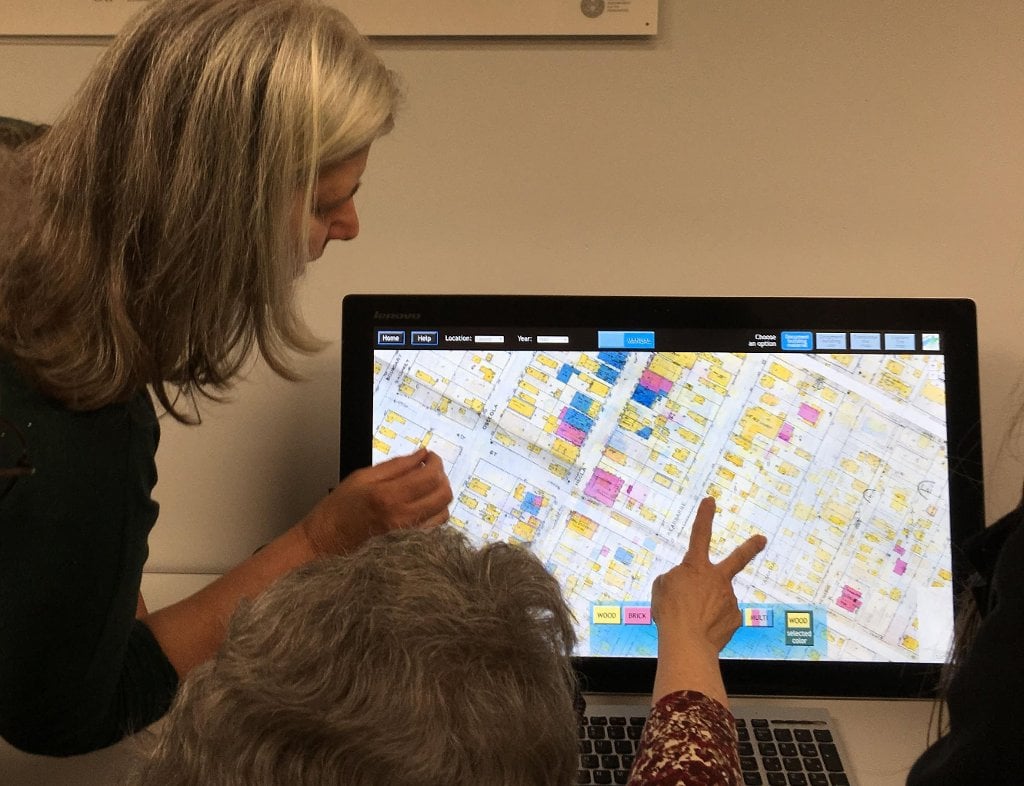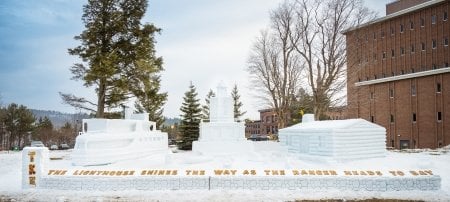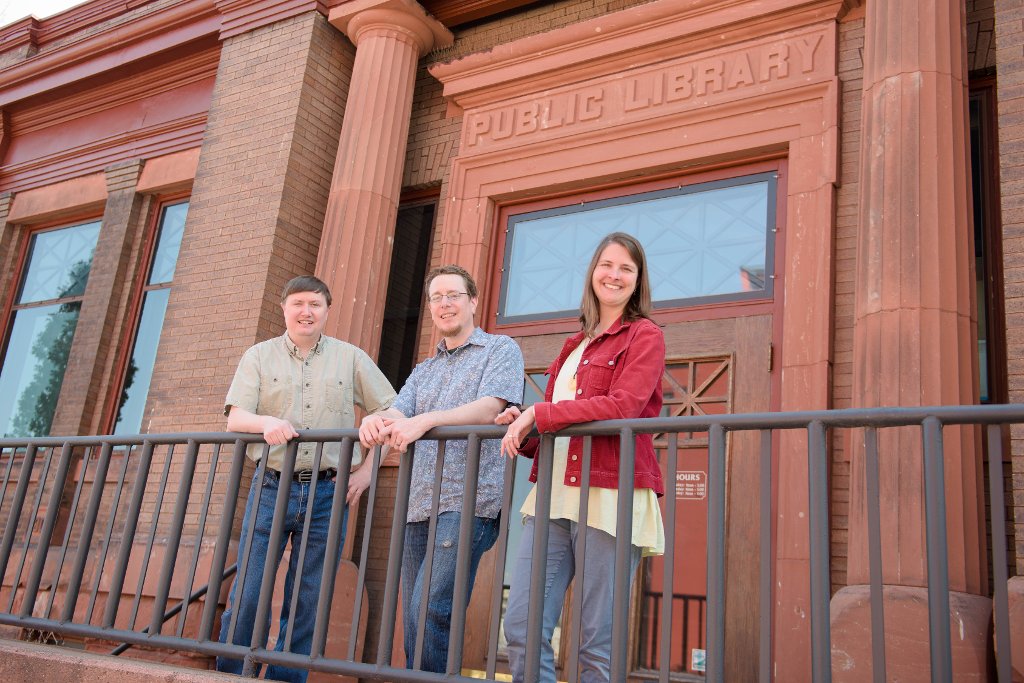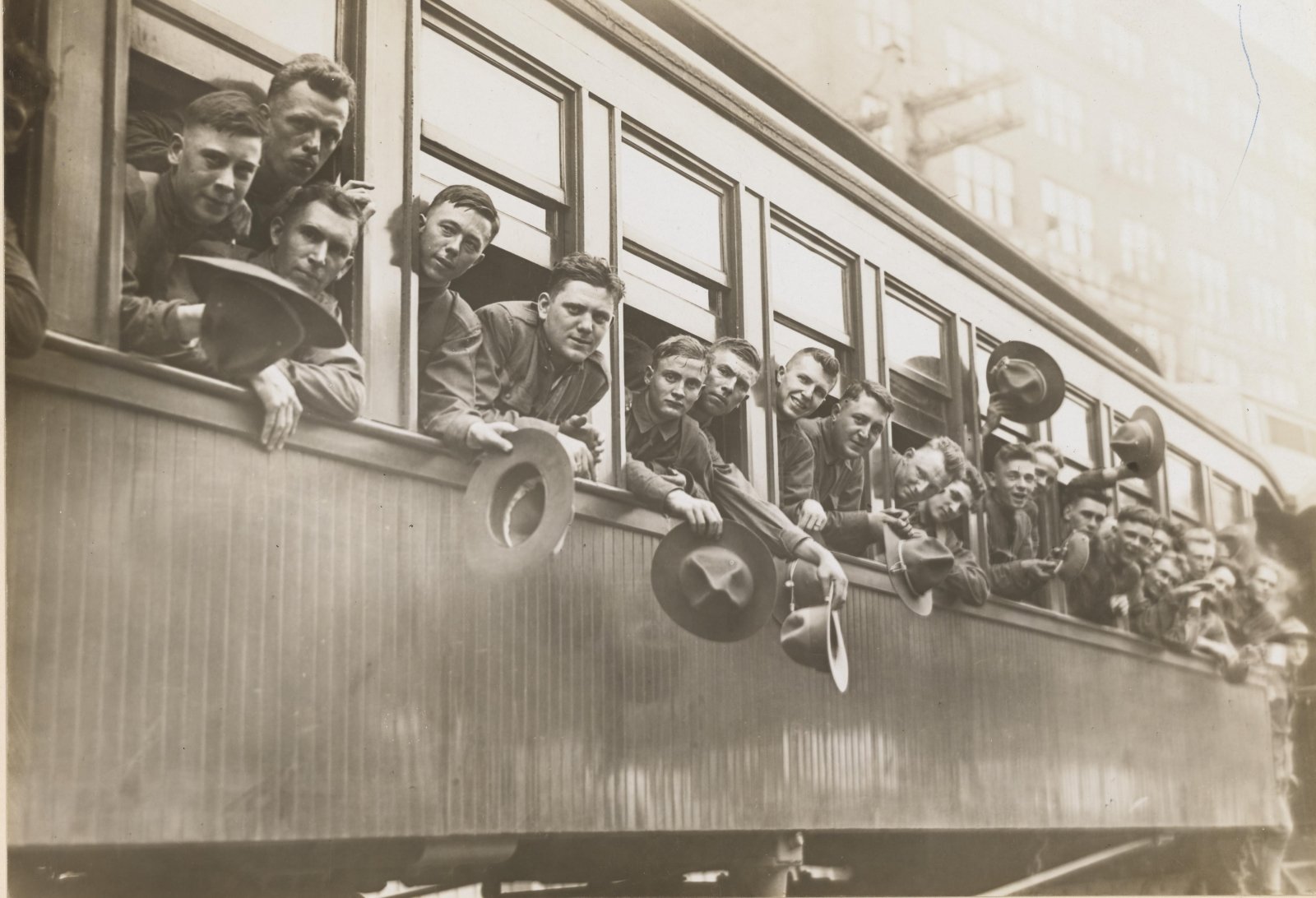The Copper Country community will have the chance to "Dig Deep into History" with the launch of the Keweenaw Time Traveler, June 15.
After more than a year of research, testing and community-led design, the Keweenaw Time Traveler is ready to launch. This digital map-based project allows the general public, as well as social and natural scientists, to explore how the region and its population has changed through time. Supported in part by a three-year $259,882 grant from the National Endowment for the Humanities, the project—officially titled “Copper Country Historical Spatial Data Infrastructure”—goes by the user-friendly moniker of “Keweenaw Time Traveler.”
A group of researchers at Michigan Technological University have been digitally recreating the many environmental histories or “stages” of the Copper Country using Geographic Information Science (GIS) technology. Each stage is comprised of many “scenes” or time periods, much the way a filmmaker creates a scene to contextualize the story he or she is portraying on the screen. From more than 1,000 historical maps and archival documents scanned from our region’s archives, most of Houghton, Keweenaw and Ontonagon counties have been digitally modeled from 1850-1950.
Launch of the Keweenaw Time Traveler
The public will have their first chance to try the Keweenaw Time Traveler at a launch party from 6:30 to 8 p.m. Thursday, June 15 at the Carnegie Museum in downtown Houghton.
Over the past year students and staff from Michigan Tech, working with local schools and community groups, have scanned and mapped historical records such as city directories, censuses and school registers. This record linkage technique places past residents in their specific homes, workplaces and schools, allowing anyone to search by name or address and see the results on historically accurate maps.
Don Lafreniere, assistant professor of geography in Michigan Tech’s Social Sciences Department says users can search historical records by name, address, place and building type by year. “In addition,” he says, “they can pick a location and add their knowledge, memories and stories to share with other Copper Country enthusiasts as well as researchers.”
Lafreniere explains: “Not only can someone look at the history of a specific address at a specific time, but then they can move ‘horizontally’ across the landscape to learn about the relationships between people and places. This kind of exploration can reveal the immigrant experience, ethnic segregation, daily life in the mining locations and the environmental legacies of industry.”
With this historical “big data,” the Michigan Tech-led team built a set of five interactive web apps that allow everyone to explore, share, connect and contribute to making the Keweenaw Time Traveler even better. Two of the apps ask people to look at historical maps to classify buildings based on their use and construction materials. Another app asks people to transcribe handwriting that computers can’t read. Taking cues from citizen science scholarship, these apps represent the first project to integrate public participatory GIS methods with historical research, Lafreniere says.
The last two apps allow users to explore the data and maps through time, search for bygone places, or identify past people, as well as submit their own stories, memories, information and photographs. Users can share their stories across social media and connect with other people around the world interested in Michigan’s Copper Country. All of the submissions are immediately contextualized with existing historical data, allowing you to learn who lived near the smelter or above the bakery in Calumet.
Public Participation Needed
The apps have been tested at public gatherings throughout the community. Sarah Scarlett, assistant professor of history, says public participation is a cornerstone of the project.
“We planned to have community input at every step along the way,” Scarlett says. “We are not producing a tool and presenting it to the public, saying ‘hey, look what we built; we hope you like it.’ We’ve worked with the community to hear what they want, received feedback, and built a tool we are confident they will enjoy and use.”
Lafreniere agreed the public meetings or “design charrettes” were essential to the project’s development. “We have held 10 charrettes to date with different groups to have the community help design the apps they are going to use. This is how we are balancing the needs of the public to have access to information about their past and our needs to create a research infrastructure.”
Scarlett says the next step is to make it accessible to as many people as possible. “The Keweenaw Time Traveler will be a community gathering place for sharing ideas and memories as well as research and data. We hope the numbers of people who use it will grow over time, and that people will find their own creative and innovative ways to use it.”
Explorations of the use of the Keweenaw Time Traveler for heritage management are already underway, and John Arnold, a PhD candidate in Industrial Heritage and Archaeology at Tech, is highlighting some of these in his dissertation work. Arnold explains that “Up here in the Copper Country, so much industrial heritage has already been lost…it’s really hard to understand the meaning of what’s left without understanding the historical links between different places, and places in the landscape. The Time Traveler gives us the opportunity to see, and to share, these connections.”
"We can’t wait to show our community and our partners how the Keweenaw Time Traveler works."
The first real opportunity for the public to see and use the Keweenaw Time Traveler will come Thursday at the Carnegie Museum, The project’s developers are finding it difficult to contain their excitement over the Thursday launch of Keweenaw Time Traveler.
“We can’t wait to show our community and our partners how the Keweenaw Time Traveler works,” Scarlett says. “At the launch party we will have iPads and touch-screen kiosks available, and you can also bring your own tablets or laptops.” At the launch, Time Traveler team members will work with the public in small groups to identify locations on historical maps, search datasets, and contribute their own memories and even digital photos.
Scarlett says Thursday’s party is only the beginning. “Once we launch, the real excitement begins. We will be at events all summer, making presentations introducing this new tool, teaching people how it works and helping everyone use it.”
Among those events are BridgeFest in Houghton, Pasty Fest in Calumet, and scheduled presentations such as the History on the Hill series at the Quincy Mine Hoist Association.
Visit keweenawhistory.com for upcoming events to “map your history.”
The Keweenaw Time Traveler is funded by the National Endowment for the Humanities and developed in collaboration with Keweenaw National Historical Park and its Advisory Commission, Isle Royale National Park, the Carnegie Museum of the Keweenaw, the Michigan Tech Archives and Copper Country Historical Collections, and the historical societies of Houghton, Keweenaw, and Ontonagon counties.
Michigan Technological University is an R1 public research university founded in 1885 in Houghton, and is home to nearly 7,500 students from more than 60 countries around the world. Consistently ranked among the best universities in the country for return on investment, Michigan's flagship technological university offers more than 185 undergraduate and graduate degree programs in science and technology, engineering, computing, forestry, business, health professions, humanities, mathematics, social sciences, and the arts. The rural campus is situated just miles from Lake Superior in Michigan's Upper Peninsula, offering year-round opportunities for outdoor adventure.






Comments